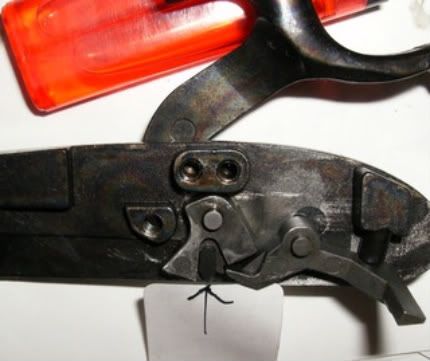Common problem with the Lyman and T/C locks,
This photo is a T/C but your is close;
The arrow is pointing at the Fly Detent under the bridle plate (removed for photo).It just drops in a little hole in the tumbler, it's job is to let the trigger sear skip over the half cock saftey notch when you pull the trigger.
IF the bridle plate screws are the tinyest bit loose, the fly will cock out of position and stop the hammer just short of striking the nipple. It looks, sounds and feels like a full drop, but the hammer is stopped short.
The Fix; The lock comes out of course. Check those 3 bridle plate screws,(T/C has only 2) use a proper bit and get them tight. Clean and lube the internal lock parts, it takes a few drops of oil to do the job. I put a drop right on that fly, and another that hits the back side of the tumbler, some on the trigger sear pivot and that plunger,,(too much is too much, don't get carried away).
If it's the first time the lock is out, it's a good idea to spray the entire thing with some brake cleaner, the factory lube is awfull heavy and picks up gunk really easy (grease an grit is a bad thing) slowing things down. While it's out clean up all those wood chips an burr's left in the mortice from the machining.
Cleaning and care of the lock on these things is part of it too, I do mine 2-3 times a season just to keep it in top shape. :grin:






